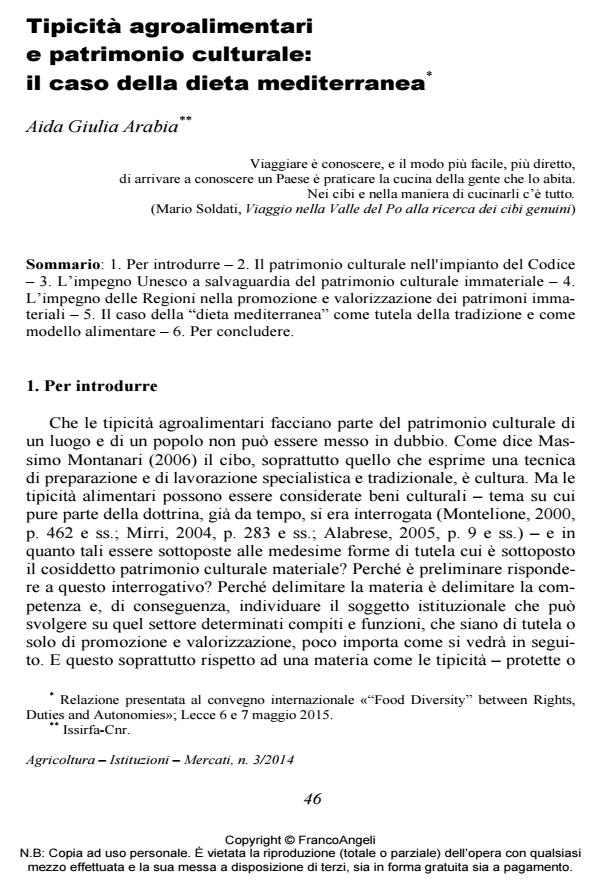Typical Agrofoods and Cultural Heritage: the Case of the Mediterranean Diet
Journal title AGRICOLTURA ISTITUZIONI MERCATI
Author/s Aida Giulia Arabia
Publishing Year 2016 Issue 2014/3
Language Italian Pages 16 P. 46-61 File size 75 KB
DOI 10.3280/AIM2014-003003
DOI is like a bar code for intellectual property: to have more infomation
click here
Below, you can see the article first page
If you want to buy this article in PDF format, you can do it, following the instructions to buy download credits

FrancoAngeli is member of Publishers International Linking Association, Inc (PILA), a not-for-profit association which run the CrossRef service enabling links to and from online scholarly content.
There are no doubts that typical foods (and traditional popular dishes) are part of the cultural heritage of a place and of a people. As Massimo Montanari says, food and above all typical and quality foods constitute culture. But can typical dishes and above all the Mediterranean diet which is made up of typical dishes, be considered to be cultural heritage and as such be subject to the same forms of protection that apply to material cultural heritage? Although being part of the intangible cultural heritage, the Mediterranean diet is much more than a cultural asset: the regional laws (Campania 6/2012 and Calabria 45/2013) that deal with this matter embrace a series of tangible elements that range from the promotion of multifunctionality in agriculture to the protection of the landscape, of natural historic and cultural heritage, sustainable tourism, healthy diets, health protection and cultural activities. If there is any sense in keeping the regions, some matters must necessarily be of exclusive competence of such autonomous bodies. This is undoubtedly the case of intangible cultural assets that arise from the local reality and that deserve adequate promotion and appreciation by such local entities.
Keywords: Intangible Cultural Heritage, Traditional Food, Mediterranean Diet, Regional Competences
Aida Giulia Arabia, Tipicità agroalimentari e patrimonio culturale: il caso della dieta mediterranea in "AGRICOLTURA ISTITUZIONI MERCATI " 3/2014, pp 46-61, DOI: 10.3280/AIM2014-003003